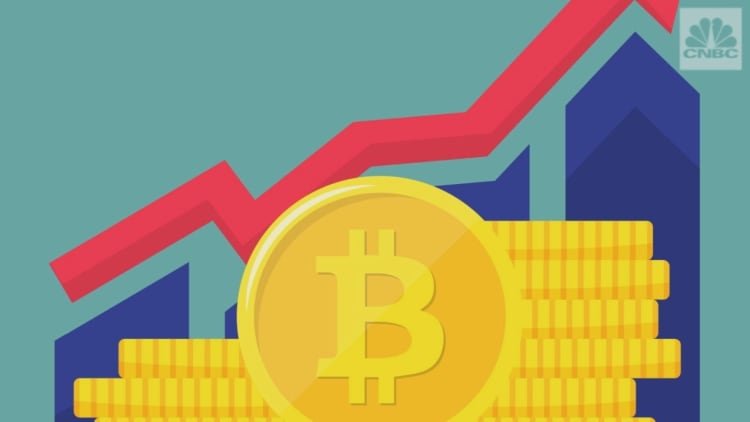
Bitcoin is behaving a lot like how the Nasdaq did during the dot-com bubble nearly 20 years ago, but the timeline is unfolding much faster, according to research published by Morgan Stanley on Monday.
The Nasdaq in 2000 and modern-day bitcoin both rallied 250 to 280 percent in their most "exuberant" periods ahead of bear markets, Morgan Stanley said in a note to clients.
"Just that the bitcoin rally was around 15 times the speed," Sheena Shah, strategist at Morgan Stanley said.

These price moves and similar behavior in trading volume could be signs that Nasdaq history is repeating itself, according to Shah.
Bear markets for the digital currency are not new. Since it was created in 2009, bitcoin has seen four of them, with price drops between 28 percent and 92 percent, Shah said. Bitcoin's value has fallen roughly 70 percent from its peak near $20,000 in December to a low in February below $7,000, according to data from CoinDesk.
On average, bitcoin prices have lost 45 percent to 50 percent of their value in each bearish wave, which Shah said is similar to Nasdaq's behavior 18 years ago.
"The Nasdaq's bear market from 2000 had five price declines, averaging a surprisingly similar amount of 44 percent," Shah said.
Trading volume could be another red flag. Since December, bitcoin trade volumes have jumped nearly 300 percent, Shah said. But each rally ahead of the bear markets saw volumes fall.
"The follow-up rally for both bitcoin and the Nasdaq always saw falling trading volumes," Shah said. "Rising trade volumes are thus not an indication of more investor activity but instead a rush to get out."
Morgan Stanley pointed out changes in bitcoin trading that are not correlated to Nasdaq trends but could be "an interesting development."
There have historically been three major currencies used to buy bitcoin: The U.S. dollar, Chinese yuan and Japanese . During the most recent bear market, a new digital currency called tether ate up a bigger share of bitcoin trading.
Tether is a digital token that creators say is backed with one U.S. dollar for every unit, meaning its market price is $1, and it could theoretically be more stable than most digital coins with huge price swings.
"The coin USDT is not a major funding unit but its increasing use is an interesting development," Shah wrote. "Over the coming years, we think that market focus could turn increasingly towards cross trades between cryptocurrencies/tokens, which would transact via distributed ledgers only and not via the banking system."
Bloomberg reported in January that the U.S. Commodity Futures Trading Commission sent subpoenas to Tether, the company that issues the virtual currency. The company has come under scrutiny, as some are skeptical it actually has $2.2 billion on reserve.
WATCH: If you own bitcoin, here's how much you owe in taxes



